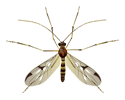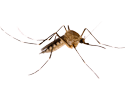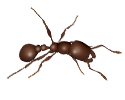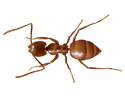The 7 Biggest Myths About Houston Insects
 There are plenty of myths that only Texans will understand – crossing paths with a buzzard brings eternal bad luck and horse hair can ward off rattlesnakes. As adults, we know these have little truth to them. However, you may still be falling for some of the biggest myths when it comes to common insects in Houston. Holder’s is here to bust some of these common myths, and maybe help you rest a little easier at night!
There are plenty of myths that only Texans will understand – crossing paths with a buzzard brings eternal bad luck and horse hair can ward off rattlesnakes. As adults, we know these have little truth to them. However, you may still be falling for some of the biggest myths when it comes to common insects in Houston. Holder’s is here to bust some of these common myths, and maybe help you rest a little easier at night!
Myth #1: Cockroaches can survive anything – even nuclear blasts.
It is true that cockroaches can withstand a lot. The fact they can go as long as a full week without a head, withstand 10 times more radiation than humans, and have survived since prehistoric days is proof of this. Their ability to survive a nuclear blast, on the other hand, is untrue. Plus, there are much easier ways to get rid of them!
Myth #2: Termites won’t go after homes made of brick or concrete.
Will termites eat brick or concrete? No. But they will eat anything that contains cellulose – which is still found in many places inside your home – whether it is made of brick or something else. Plus, termites can easily find cracks in brick and concrete to get to the wood in your home because of their small size. Termites can eat through drywall, wallpaper and wooden furniture. Many brick homes also have a wooden frame that termites are attracted to.
Myth #3: You’re always within three feet of a spider.
Fear not! The people who have told you that you are 3 feet from a spider at all times are wrong! This myth began in 1996 and counted microscopic dust mites as spiders. Generally speaking, you are not going to find large, monstrous spiders close to you. But depending on where you are, you can assume there are some close by. Standing in a lawn, there are probably tiny ones under or near your feet only centimeters away. On an airplane? The closest ballooning spider (the process of becoming airborne to disperse spiderlings) could be as far as several miles away.
Myth #4: Baking soda and vinegar can be used to kill fire ant colonies.
The Internet is filled with all kinds of DIY tricks you can use to kill fire ants and other pests. One popular recommendation is using household products (baking soda and vinegar are most popular) to kill fire ant colonies. Specialists at Texas A&M have performed many tests that verify these will not eliminate fire ants. Sure, they may kill off some in the colony, but these ants are highly adaptable and can remove themselves from harm’s way and quickly rebuild.
Myth # 5: Mosquitoes are more attracted to us when we eat certain foods.
No studies can confirm that mosquitoes are attracted to what you eat. In fact, as far as we know, there isn’t much we can do to make ourselves less attractive to mosquitoes. The biggest draws for mosquitoes are carbon dioxide and heat – which is why mosquitoes tend to prefer men over women and adults over children. Larger people tend to produce more heat and carbon dioxide and offer more to bite.
Myth # 6: Wasps prefer sweet foods.
If you’re eating outside, you may notice that wasps often gravitate towards soda cans, juice and other sweet th ings. While it is true that they love sweet, nectar-rich foods, what they eat actually depends on where they are in the process of nest-building. In the spring and early summer is when most wasps begin their nest-building process and seek out protein-rich foods. By late summer and early fall, wasps are more interested in sweet foods like soda, fruit juice, fallen apples, etc. Keep your yard and patio clear of leftover food and keep garbage containers closed to avoid nesting in your home.
Myth #7: A clean home will keep dirty pests like cockroaches, flies and ants far away.
It is true that dirty homes are conducive to the survival of insects, but it is not the true reason you have a bug problem in the first place. In fact, cockroaches will eat almost anything – from plant matter to dead skin cells – which makes it difficult to get them to leave. What you should be more concerned about is how they are getting inside and why they are entering. This often has more to do with the exterior of your home, yard and climate conditions than it does the inside of your home. While store-bought sprays and other traps may help kill off what insects find their way in, it doesn’t get rid of the source of your problem.
Holder’s investigates the true reason you are experiencing pest problems and helps eliminate the source, rather than just reducing the symptoms. Connect with us today!
The 7 Biggest Myths About Houston Insects Serving
Houston
Beaumont | Conroe | Spring | Pasadena | The Woodlands | Richmond | Galveston
Baytown | Bryan | Cleveland | College Station | Cypress | Pearland | Sugar Land
Home » The 7 Biggest Myths About Houston Insects
 There are plenty of myths that only Texans will understand – crossing paths with a buzzard brings eternal bad luck and horse hair can ward off rattlesnakes. As adults, we know these have little truth to them. However, you may still be falling for some of the biggest myths when it comes to common insects in Houston. Holder’s is here to bust some of these common myths, and maybe help you rest a little easier at night!
There are plenty of myths that only Texans will understand – crossing paths with a buzzard brings eternal bad luck and horse hair can ward off rattlesnakes. As adults, we know these have little truth to them. However, you may still be falling for some of the biggest myths when it comes to common insects in Houston. Holder’s is here to bust some of these common myths, and maybe help you rest a little easier at night!





